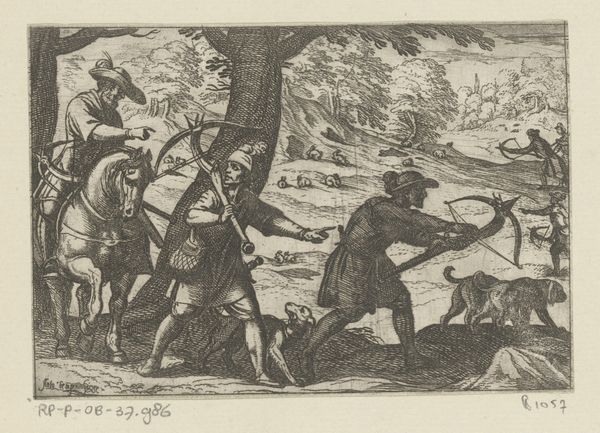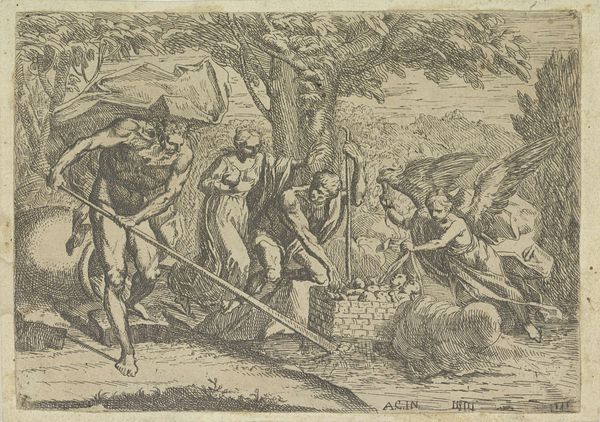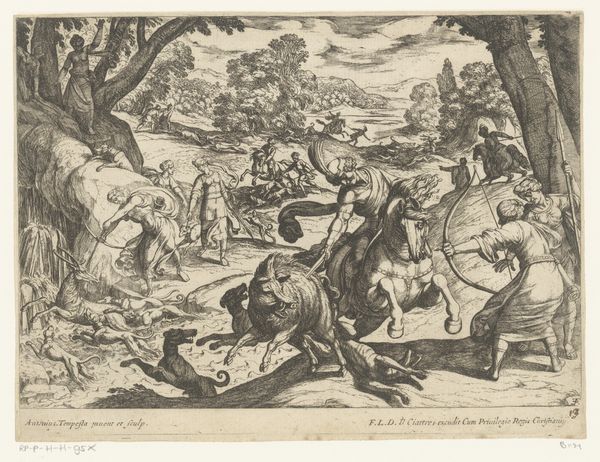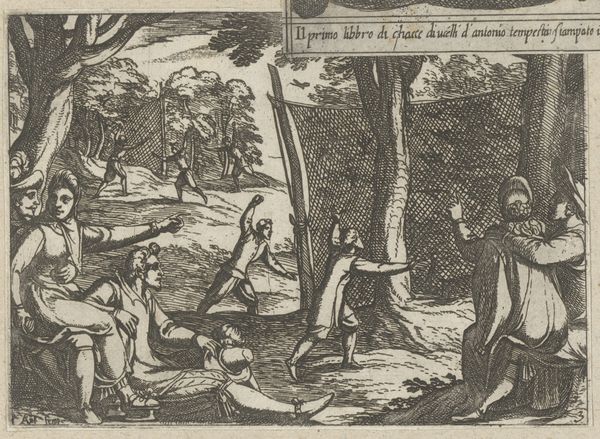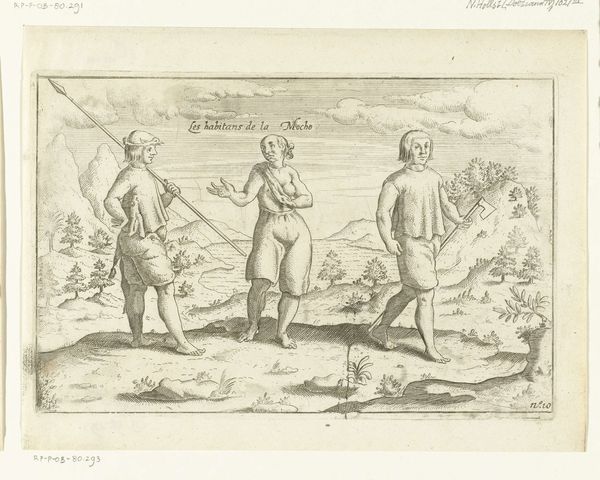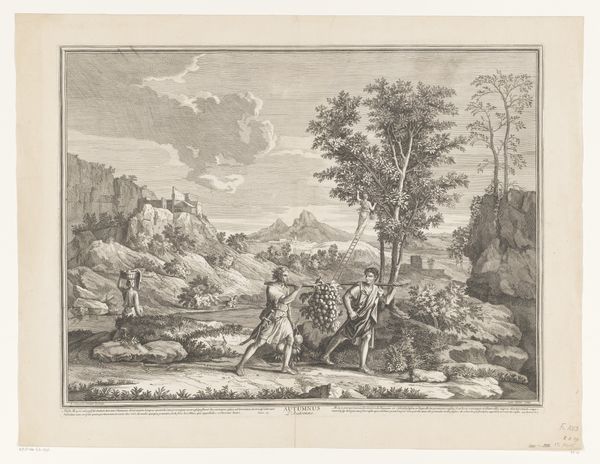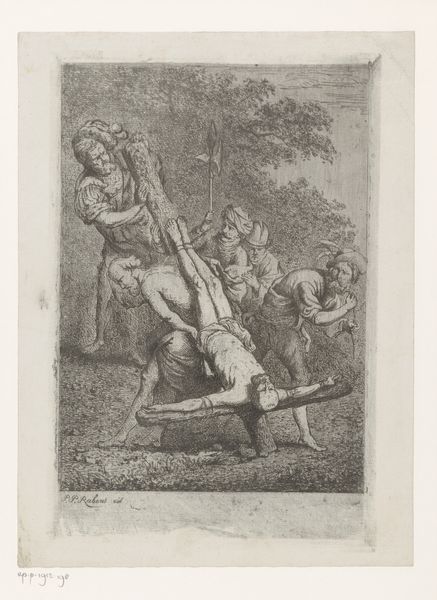
print, engraving
#
baroque
# print
#
landscape
#
figuration
#
line
#
history-painting
#
engraving
Dimensions: height 205 mm, width 250 mm
Copyright: Rijks Museum: Open Domain
Curator: Look at this striking engraving titled "Tobias neemt afscheid van zijn ouders," or "Tobias Taking Leave of his Parents." Created sometime between 1610 and 1649, it now resides here at the Rijksmuseum. What are your initial impressions? Editor: It's captivating. The monochromatic landscape feels somber yet the composition leads the eye through a beautiful, somewhat perilous landscape. The detailed lines create textures that make you want to reach out and touch the bark on the trees, or feel the rush of the water. Curator: Indeed. Engravings like this were relatively commonplace. This artwork would likely have been printed on thin sheets and collected in books. Given that engravings involve the skillful cutting of lines into metal plates, this lends itself to clean lines with high precision in details, what could have represented an affordable access to fine art to the wider population. Editor: That precision is quite remarkable. The contrasting light and shadow give it depth, drawing focus to Tobias who appears to be battling both a large fish and a current of water. Curator: Correct. In terms of the narrative, we see Tobias from the Book of Tobit which forms part of the biblical apocrypha. Tobias is taking a perilous journey to collect a debt for his father, under the protection of the archangel Raphael. Here, it appears he's about to leave, with the angel, and a dog assisting him. The fish actually becomes important later in the story because the angel reveals that its gall can cure Tobias’ father’s blindness. Editor: Fascinating how a humble fish embodies such potent symbolism here. Beyond its narrative function, consider the craftsmanship itself. It is intriguing how the sharp lines are meticulously created, giving life and a sculptural feel to both angel and the poor struggling man in water. Curator: And it wasn’t simply the artistry of the engraver at play but also their reliance on collaborative structures of labour within printmaking workshops. This particular composition speaks to a broader cultural consumption that favoured dramatic religious tales but, was enabled via networks and material conditions which sometimes are being forgotten or understated when art gets reified as something detached of the socio-economic reality of the art market. Editor: A truly amazing glimpse of art through an historical and materialist perspective. This certainly highlights the skills needed for meticulous engraving to make religious themed illustrations available to wider audiences. Curator: Agreed, thinking of those details can really expand and challenge traditional notions and definitions around fine art.
Comments
No comments
Be the first to comment and join the conversation on the ultimate creative platform.

